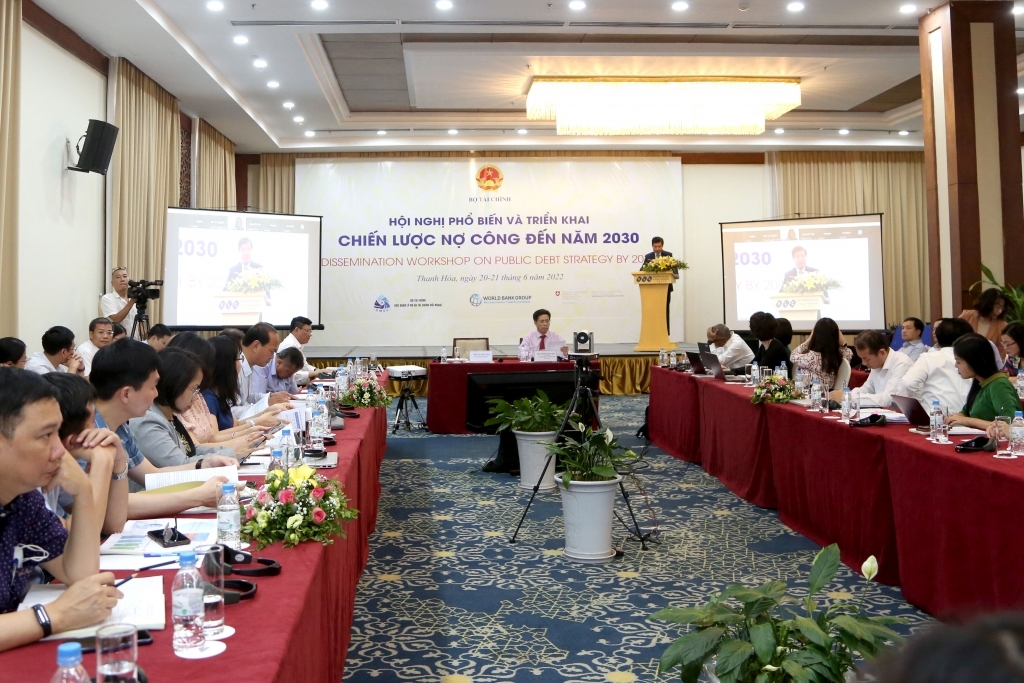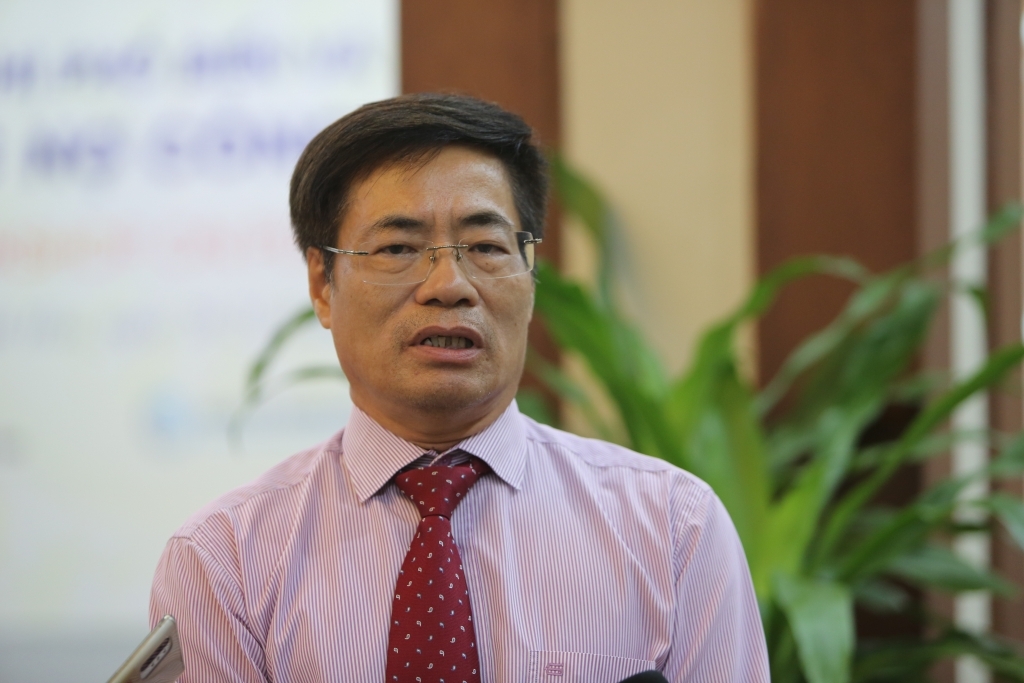Public debt strategy to 2030: Spending and borrowing within economy's ability
Spending and borrowing within the economy’s means is a key part in the public debt strategy by 2030 approved by the Government.
 |
|
The workshop. |
Six key contents in the public debt strategy
“Vietnam has graduated from the International Development Association (IDA) loan conditions of the World Bank (WB) and has lost access to concessional finance from IDA. The country
will have to rely on market tools and require more careful and flexible planning of medium and long-term borrowing and debt repayment strategy to limit negative long-term consequences. The COVID-19 pandemic requires a readiness to mobilize reserve finance in the short and medium term.” Director of the Department of Debt Management and External Finance (Ministry of Finance) Truong Hung Long said at the dissemination workshop on public debt strategy jointly held by the Ministry of Finance, the World Bank, and Swiss Federal Department of Economic Affairs on June 20.
 |
|
Director of the Department of Debt Management and External Finance (Ministry of Finance) Truong Hung Long |
Director Truong Hung Long said that the development and implementation of the Public Debt Strategy for 2021-2030 is associated with six main points of view.
The first view is to only spend within the economy’s capacity and borrow only within the repayment capacity. The domestic loans are decisive, foreign loans are important, and public debt continues to be a lever for socio-economic development, creating a driving force for sustainable growth.
“Strengthening financial management, state budget, public debt according to the medium-term plan, ensuring the consistency between the financial plan and the public investment plan, public loan repayment plan. Public debt resources need to focus on offsetting the State budget deficit, borrowing according to capital needs” said Director Truong Hung Long.
Strict public debt management is the task of all sectors and agencies at all levels and capital-using units, improving the efficiency of loan mobilization, allocation and use; and the careful calculation of the debt repayment capacity of each budget level and each borrower; arrange full and on-time debt payment as committed, without affecting the national credit rating;
In addition, the capital mobilization channels need to be developed in association with debt portfolio restructuring to increase sustainability. The digital transformation in public debt management needs to be strengthened. The use of public debt loans and repayment need to be implemented in a transparent manner and reported by all levels.
Ensuring stable local revenue, expenditure and safe public debt
“The Prime Minister's issuance of Decision 460/QD on approving the public debt strategy by 2030 is a great significance, which concretizes the key views, goals, tasks and solutions set out in Resolution 07-NQ/TW of the Politburo on policies and solutions to restructure the state budget and manage public debt to ensure a safe and sustainable national finance” said Vice Chairman of Thanh Hoa Provincial People's Committee, Nguyen Van Thi.
This is also a step to concretizing the Resolution of the 13th National Congress of the Party and the Law on Public Debt Management 2017 of the 14th National Assembly; severs as an important basis and orientation for localities to perform tasks and solutions on state budget - finance management and administration and local public debt management.
In the 2016-2020 period, Thanh Hoa province attracted 13 ODA projects worth USD$393 million and borrowed US$31.3million from the Government’s loans. The province's loan projects focused on solving important and urgent issues such as social security, improving people's lives, urban development, water supply and drainage, and investment in socio-economic infrastructure of the province. The concessional loans have been effectively used in line with the regulations of the Government and the donors said the Vice Chairman.
The leader also said that over the past time, the province has implemented stable balance of revenue and expenditure and ensure public debt safety; closely controlled debt safety indicators and prevented outstanding debts, affecting commitments with donors; implemented effectively public investment and allocated plan soon.
The annual disbursement rate of public investment capital is always in the leading group in the country. The province has strengthened the State management; enhanced investment discipline and improved the management capacity and using loans.
According to Director of HCM City Department of Finance Pham Thi Hong Ha, in the period 2017-2021, the City mobilized significant capital to add the expenditure for development investment of the local budget, creating more resources for socioeconomic development.
The city’s loans are worth VND16,202 billion, of which, VND4,800 billion is from issuance of local government bonds, accounting for 30%, and VND11,402 billion from the on-lending capital from the Government’s foreign loans, accounting for 70%.
Besides the positive results, the city still faces difficulties and shortcomings in mobilizing, using and repaying local government debts, the Director said.
The city's debt structure is not diversified and still depends on the government's external loan re-lending capital, which faces potentially risks in exchange rate, market, interest rate, especially when it requires strict conditions for ODA loans and foreign concessional loans.








